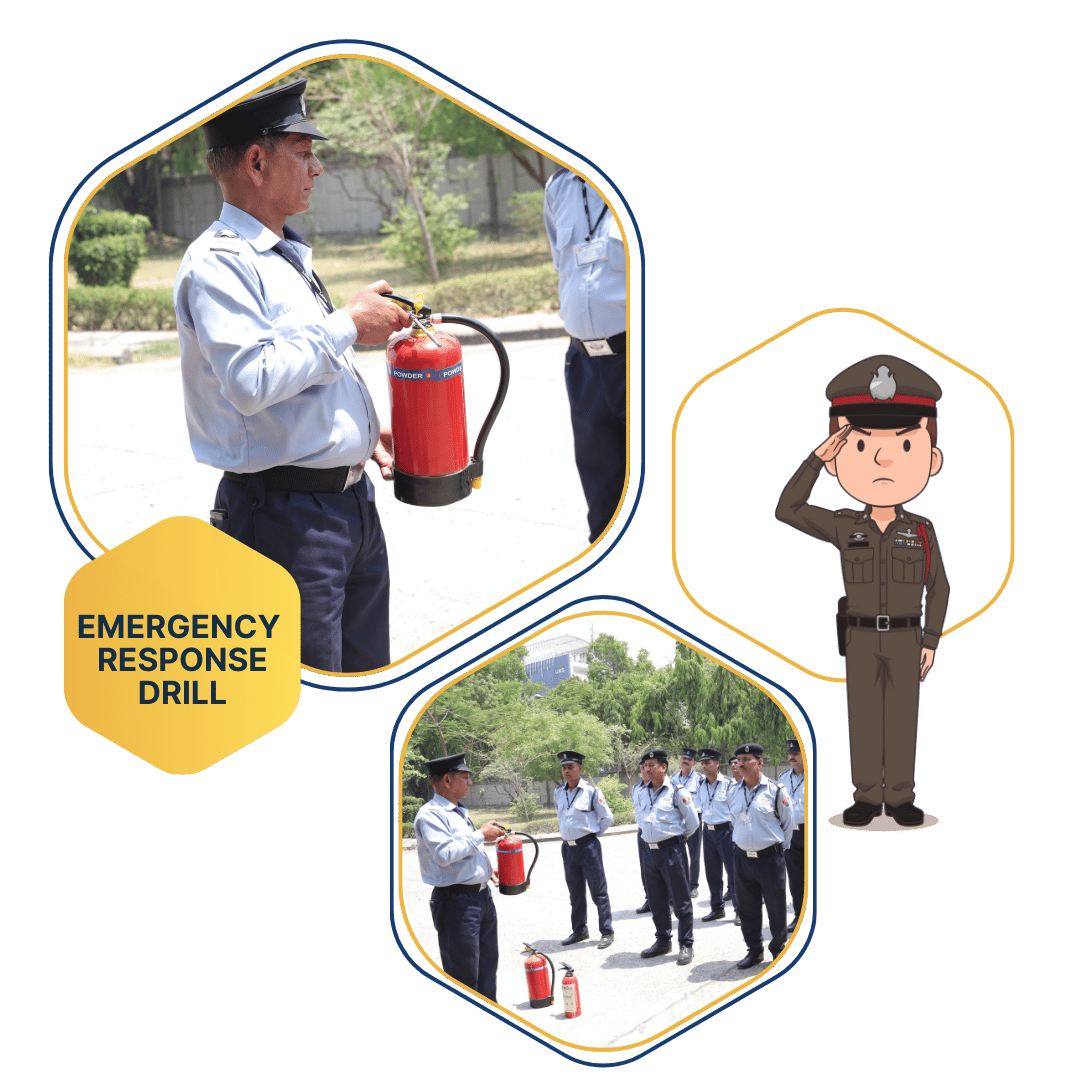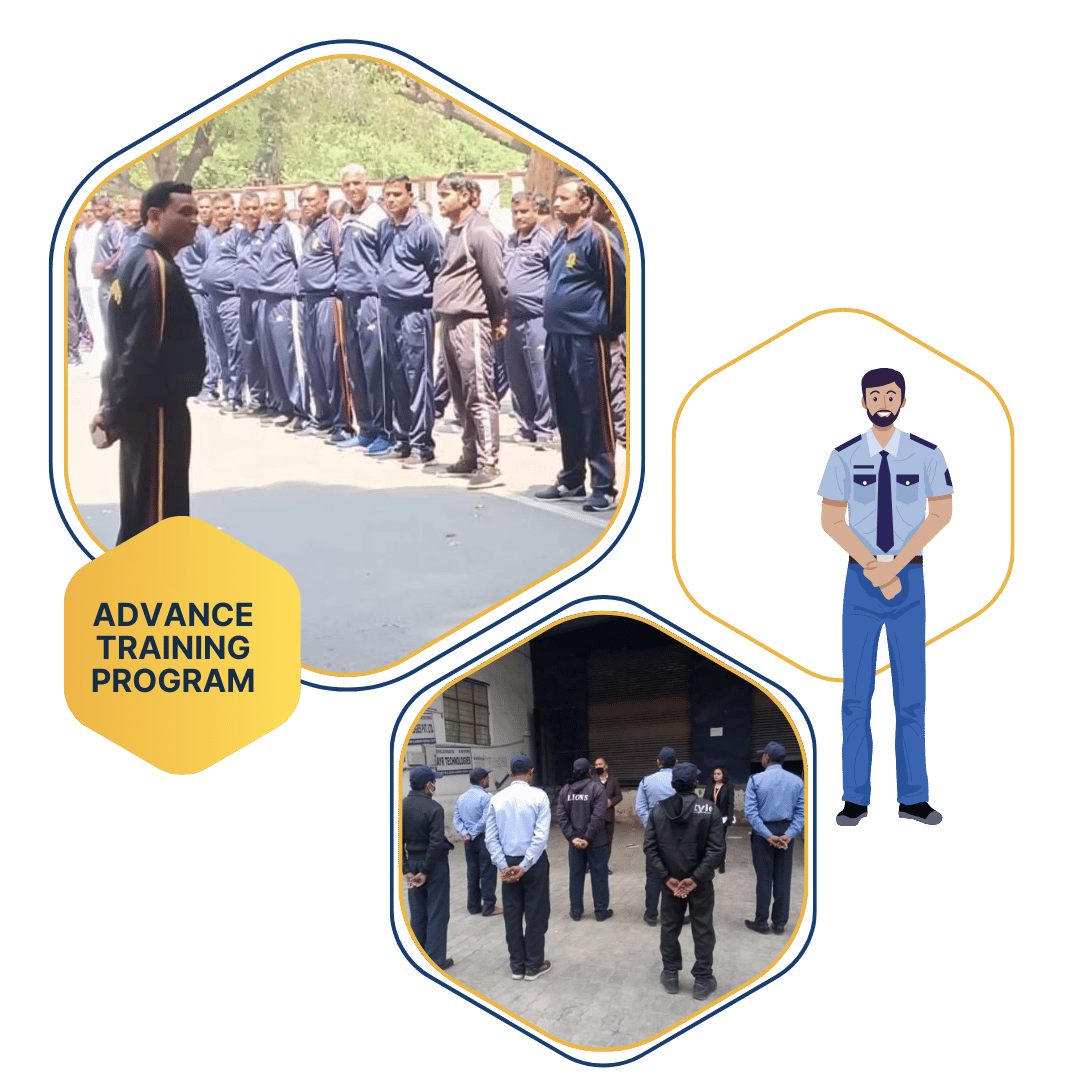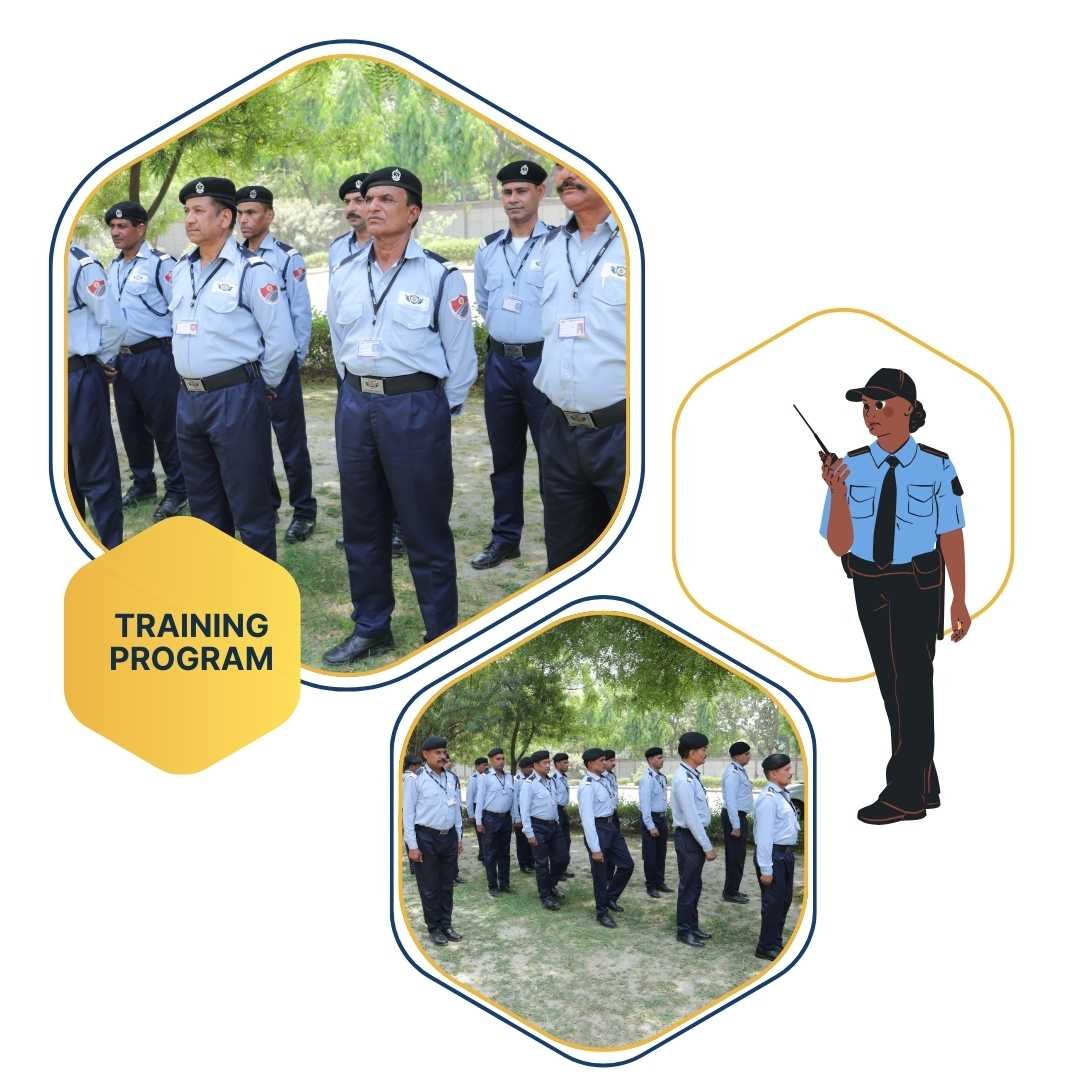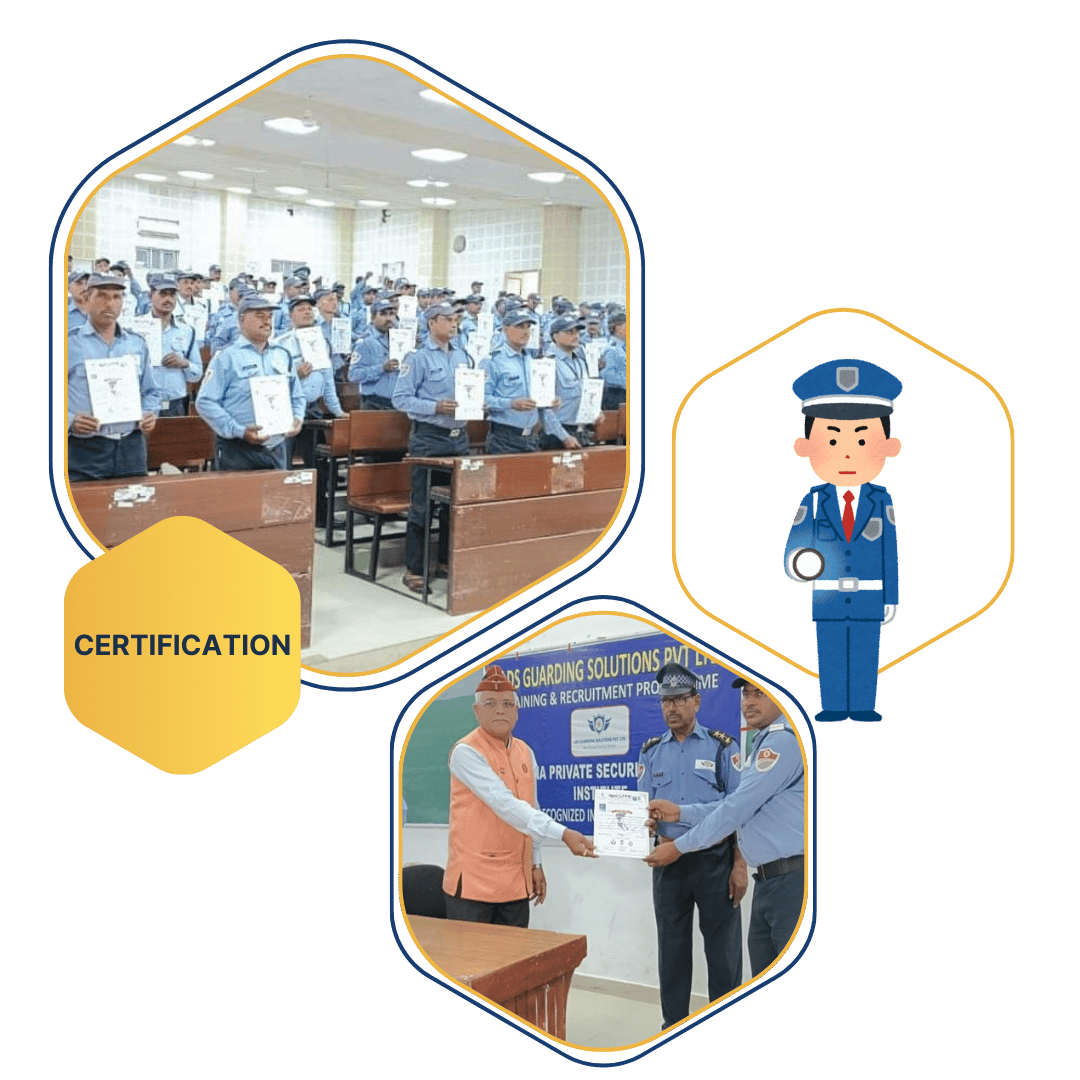



Building Confidence Through Expert Training
LDS stands by the principle that training is crucial for creating an excellent security firm, and this cannot happen without proper preparation. Training courses are very well planned out and customized to equip our security guards with real life situations they are likely to face in the field. Here’s how we conduct our comprehensive security guard training:
Increased Competency
Ever Vigilant Eyes
Unwavering Integrity
Effective Communicator

Expert Instructors
Comprehensive Curriculum
Hands-On Experience
Industry-Recognized Certification

The first segment of the security guard training program is the Initial Assessment and Orientation phase where individual aptitude, how they acquire new knowledge, and their expectations are assessed. This way the learner characteristics assist in pin pointing deficiency areas, setting achievable training targets and explaining company policies, safety measures and the responsibilities of the learners to be clientele security personnel. The positive attitude in the learning process is acceptable, it creates a relationship between the trainers and the trainees; it also enhances the realization of knowledge and capacity among trainees. These includes safety briefing, feedback mechanisms and issues that may be of concern to the trainee are critical to ensuring that this phase has rooted and set the right foundation for quality and competent security guard training.
Personal Assessment
To form a foundation of trainee information, we perform a context, ability, and ambition survey.
Orientation
Part of training involves orientation that enlightens trainees on the company and its operation, including its values, mission and their responsibility for security and safety.

Classroom Instruction in security guard training provides necessary instruction like security measures, legal features, and communication skill. These are among some of the things that the trainees learn during the training; it includes patrolling techniques, access control and also incident reporting. They become aware of emergency responses, crisis handling processes, and even basic elements of first aid. There are usually scenarios or simulations in the program and there may also be exercises supported by case studies where trainees practice actual situations. It is suited to enhance professionalism in work, ethical practice, and compliance to the set laws.
Core Concepts
The training also provides trainees with intensive knowledge on main security concepts central to physical security, observation, and preparedness for crises situations.
Legal Framework
It is essential to comprehend the rules which operate on local level, rules and regulations on state level and federal level .
Communication Skills
It is crucial to note how communication should be used in solving conflicts and also as a means of reporting.

In matters concerning concept application, gainful employment of practically learning, security guard training is possible solely in the context of an actual setting where the guards operate. Trainees participate in role plays, including scenarios containing elements such as patrolling the assigned area, surveillance activities, and some sort of emergency evacuation. They are trained in the proper way in handling security equipment like the CCTV system, communication devices among others. An important aspect of the program is also role plays including conflict handling and management, use of necessary actions that tend to limit conflict, and probable actions likely to cause increased conflict.
Simulation Exercises
Trainees go through exercises which are real life like models that test the security capabilities of the trainee.
Patrolling Techniques
Skills-based patrol involving on-road patrol using cars, foot patrol, as well as access control measures.
Surveillance Operations
Education of surveillances recognizing apprehensive actions by the use of CCTV systems and other surveillance technologies.

Security guard training involves practicing the management measures in cases of an emergency, often through realistic drills. They undergo simulations on how to properly handle emergencies in place such as medical incidents, fires and security break ins among others. They learn how to evacuate and how the facility deals with emergencies, including tactics like cardiopulmonary resuscitation (CPR), treatment, and call response. Such drills help establish their ability to remain cool under pressure, the quality of decisions made, cooperation with other players, and communication. Field work exercises are used to orient trainees in the handling of emergency tools including the fire extinguishers and the first aid kits available on board the train.
Crisis Management
Emergency incidents, medical emergencies, fire incidents as well as security issues are simulated, and the trainees rehearse on how to handle them if they were to happen in real-life.
First Aid Training
Emergency response training especially in macro-activities such as Cardio-Pulmonary Resuscitation (CPR) and basic life support skills to be adequate in case of any medical crises that may arise.
Evacuation Procedures
Simulations seen as a critical fundamental for actual crisis response evacuations that are safe and efficient.

APT in security training is designed to escalate the level of security professionals with specialized training for specialized security operations. Courses include but not limited to crisis management, protective operations, tactical weapons, protection of assets, information security, and sophisticated methods of surveillance. These include firearms handling and movement, tactical response, "force recognition\" besides measuring the risk involved in various situations. This training focuses on decision making in the highly sensitive situations, communication with the stakeholders, and of course, ethical practices.
Armed Security Training
Soldiering skills, ways of handling firearms, methods and procedures of handling threats and dealing with them.
Executive Protection
Security measures; evaluating risks; self-protection.
Event Security
Non-physical crowd management measures, a detailed description of security measures concerning particular events, and the assessment of possible security threats during the process.

Evaluation and feedback are important components in security guard training since it facilitates the appraisal of trainees’ learning, comprehension, and mastery of the learned concepts and skills. Quizzes are conducted periodically in order to check the employee’s understanding of security policies, handling of crises, and business/ ethical practices. Skills and drill exercises are used to assess the trainees to decipher their effectiveness of implementing the learned concepts practically. Coaching and mentoring from trainers and/or peers focus on the positives of training and development as well as potential constructive critique of the training plan and delivery. This method provides a post-training evaluation loop, guaranteeing the adequacy of training and strengthening professional qualifications.
Performance Assessments
use of tests and quizzes to check the performance of the trainee commonly trainees must be given tests and quizzes frequently to check on their progress and competency.
Feedback Mechanism
Skills development: logging constructive feedback sessions regarding effective and non-effective behaviors and accomplishments meeting pre-determined targets and goals.

Continuing Education & Renewals: Continuing education and renewals are the critical aspects of encouraging professionalism and quality of services in the security profession. Sustained training remains relevant in ensuring that security professionals are up to date with industry innovations, threats, and standard practices. There are workshops, seminars, and online courses that may address subjects such as security, emergencies, and the law or laws applicable in certain situations. Recertification helps to ensure that guards stay locked in to their craft and know all the rules and regulations. When they are tested through analytical methods or when they take refresher courses, and skills appraisal they feel affirmed of their knowledge and proficiency.
Continual Learning
It is important that our team is kept informed of security matters, which is why we offer continued training on security and security solutions.
Recertification Programs
This can be regarded as one of the key reasons why constant recertification of guards is compulsory to guarantee they operate at their best.

Our security personnel at LDS have to go through a difficult training and be accredited for them to get certified as well as equipped with the necessary skills. Our guards are trained, assessed regularly and educated continuously so that they can always be updated on the new security methods. Thorough needs assessment is where our strategic deployment process starts from before coming up with customised deployment plan. We provide site-specific training through advanced scheduling to enhance optimal placement and readiness of our security staffs. They have continuous monitoring and 24/7 support hence effective and adaptable security coverage ensuring your comfort and safety.
Certification
The outcome of the training program involves issuing of a certificate in an attempt to confirm that the trainees are fully equipped with the necessary skills and knowledge that will enable them respond appropriately.
Deployment
Trained guards are then posted to various positions, where they practice what they were trained on in practice settings but under close supervision of well experienced Managers.